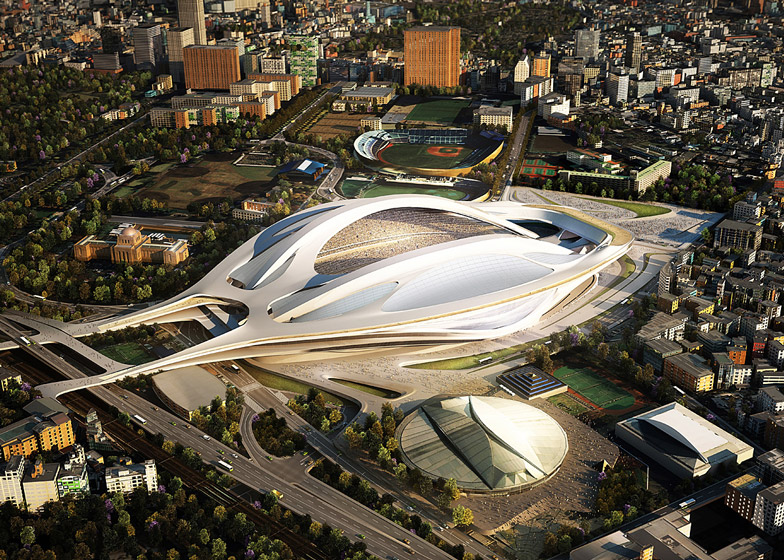News: a stadium designed by Zaha Hadid as the centrepiece for the 2020 Tokyo Olympics is set to be downsized following criticisms from a band of Japanese architects over its scale and cost.
Zaha Hadid's competition-winning design for the new 80,000-seat stadium was approved by the Japanese government six months ago, but sports minister Hakubun Shimomura has now backtracked on the decision, telling parliament that that 300 billion yen (£1.8 billion) is "too massive a budget" for the construction.
"We need to rethink this to scale it down," he said. "Urban planning must meet people's needs."
The proposed stadium is set to host the opening and closing ceremonies for the 2020 games, as well as athletics, football and rugby events, but faced opposition earlier this month when architects including Fumihiko Maki, Toyo Ito, Sou Fujimoto and Kengo Kuma organised a symposium calling for the design to be scaled back.
In a statement last week Maki, who was awarded the Pritzker Prize in 1993, said: "The problems I see with the planned stadium all relate to the issue of scale."
Fujimoto had also voiced his objections to the size, commenting via Twitter: "We are NOT against Zaha. We just think the basic requirement of the competition was too big for the surroundings."
Zaha Hadid won a competition to design the stadium in November 2012, five months before Tokyo was named as host city for the 2020 Olympic and Paralympic games.
The Iraqi-born British architect saw off competition from 10 other finalists, including Japanese architects SANAA, Toyo Ito and Azusa Sekkei. The judging panel included Tadao Ando, who commented: "The entry's dynamic and futuristic design embodies the messages Japan would like to convey to the rest of the world."
Set to replace the existing Kasumigaoka National Stadium, the new building will be located alongside Kenzo Tange's iconic 1964 Olympic stadium in Tokyo's Yoyogi Park.
Zaha Hadid Architects previously designed the Aquatics Centre for the London Olympics in 2012.

